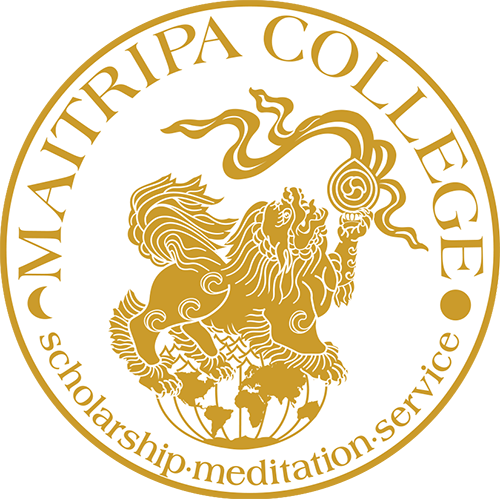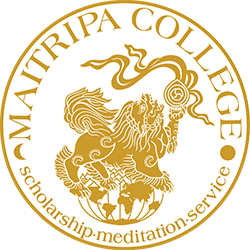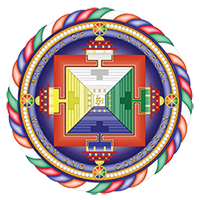“I find it fascinating, what the Tibetans did with Buddhism. I think it is utterly remarkable, and also admirable. It’s not purely historical. Although they were the world’s first Indologists, as I once wrote, a slight exaggeration in the least.
They completely absorbed Indian texts. For instance, there is Tsongkhapa, who never went to India, others did, of course, but he never went, yet he has a view for understanding the problems of the Madhyamaka, but from his time. In other words, a much more advanced form of Madhyamaka that was actually attested, explicitly in India. It’s potentially, I think, in Nāgārjuna, and even in Chandrakīrti, but above all in Nāgārjuna. I feel, in a way, he was very faithful to Nāgārjuna….” -David Seyfort Ruegg, from Oral History of Tibetan Studies. 2021. “An Interview with David Seyfort Ruegg.” December 2. (oralhistory.iats.info)
Papers by Topic
Buddhism and Truth
Cabezón, José Ignacio. 1981. “The Concepts of Truth and Meaning in the Buddhist Scriptures.” Journal of the International Association of Buddhist Studies, 4 (1): 7-23. JIABS
Collective Volumes on Contemporary Scholarship on Madhyamaka
Cowherds (Authors). 2011. Moonshadows: Conventional Truth in Buddhist Philosophy. Oxford University Press. JABL
Dreyfus, Georges B. J., and Sara L. McClintock. 2014. The Svatantrika-Prasangika Distinction: What Difference Does a Difference Make? Wisdom. JABL
Ruegg David Seyfort. 2010. The Buddhist Philosophy of the Middle: Essays on Indian and Tibetan Madhyamaka. Wisdom. JABL
Yakherds. 2021. Knowing Illusion: Bringing a Tibetan Debate into Contemporary Discourse. Oxford University Press. JABL
Madhyamaka and Yogacara
Garfield, Jay L, and Jan Westerhoff. 2015. Madhyamaka and YogYogācāra: Allies or Rivals? Oxford University Press. archive.org
Nagao, Gadjin, and Leslie S Kawamura. 1991. Mādhyamika and Yogācāra: A Study of Mahāyāna Philosophies: Collected Papers of G.M. Nagao. State Univ. of New York Press. JABL
Madhyamaka in Gelug
Hopkins, Jeffery. 1989. “A Tibetan Delineation of Different Views of Emptiness in the Indian Middle Way School.” The Tibet Journal, 14 (1): 10–43. JSTOR
Lopez, Donald S. 1989. “On the Relationships of Emptiness and Dependent Arising: Some dGe-lugs-pa Views.” The Tibet Journal, 14 (1): 44–69. JSTOR
Williams, Paul. 1989. “Introduction – Some Random Reflections on the Study of Tibetan Madhyamaka.” The Tibet Journal, 14 (1): 1–9. JSTOR
Prasangika Madhyamaka
Ames, William L. 1982. “The Notion of ‘Svabhāva’ in the Thought of Candrakīrti.” Journal of Indian Philosophy, 10 (2): 161–77. JSTOR
Ames, William L. 1986. “Buddhapālita’s Exposition of the Madhyamaka.” Journal of Indian Philosophy, 14 (4): 313–48. JSTOR
Garfield, Jay L. 1994. “Dependent Arising and the Emptiness of Emptiness: Why Did Nāgārjuna Start with Causation?” Philosophy East and West, 44 (2): 219. JSTOR
Lopez, Donald S. 1988. “Do ‘Śrāvakas’ Understand Emptiness?” Journal of Indian Philosophy, 16 (1): 65–105. (JSTOR)
Svatantrika Madhyamaka
Tillemans, Tom. 2004. “What are Madhyamikas Refuting? Santaraksita, Kamalasila et alii on Superimpositions (samaropa).” In Three Mountains and Seven Rivers: Prof. Musashi Tachikawa’s Felicitation Volume, edited by Shoun Hino, Toshihiro Wada (ed. T. Wada). academia.edu
Tsong-kha-pa and Madhyamaka
Hopkins, Jeffrey. 1992. “A Tibetan Contribution on the Question of Mind-only in the Early Yogic Practice School.” Journal of Indian Philosophy, 20, no. 3: 275–343. JSTOR
Thupten Jinpa. 1998. “Delineating Reason’s Scope for Negation Tsongkhapa’s Contribution to Madhyamaka’s Dialectical Method.” Journal of Indian Philosophy, 26, no. 4: 275–308. JSTOR
Thupten Jinpa. 1999. “Tsongkhapa’s Qualms about Early Tibetan Interpretations of Madhyamaka Philosophy.” The Tibet Journal, 24, no. 2: 3–28. (JSTOR)
Noted Scholars in Madhyamaka Philosophy
Bstan-ʼdzin-rgya-mtsho, Dalai Lama XIV
- Bstan-ʼdzin-rgya-mtsho, Dalai Lama XIV, and Thupten Jinpa. 2005. Essence of the Heart Sutra: The Dalai Lama’s Heart of Wisdom Teachings. Wisdom Publications. JABL (commentary on the Heart Sutra)
- ———. 2009. The Middle Way: Faith Grounded in Reason. Wisdom Publications. JABL (commentary to Mulamadhymakakarika chapters 18, 24, & 26)
- ———. 2012. Practicing Wisdom: The Perfection of Shantideva’s Bodhisattva Way. Wisdom Publications. JABL (commentary on the Wisdom chapter (ch. 9) of Shantideva’s Way of the Bodhisattva)
- Bstan-ʼdzin-rgya-mtsho, Dalai Lama XIV, Thupten Jinpa, Rebecca McClen Novick, and Nicholas Ribush. 2002. Illuminating the Path to Enlightenment. Thubten Dhargye Ling Publications. JABL archive.org (commentary on Atīśa’s Lamp for the Path to Enlightenment and Tsong-kha-pa’s Lines of Experience)
David Seyfort Ruegg
- Oral History of Tibetan Studies. 2021. “An Interview with David Seyfort Ruegg.” oralhistory.iats.info
- Ruegg, David Seyfort. [n.d.] “Complete bibliography of David Seyfort Ruegg with Curriculum Vitae.” academia.edu
Tom Tillemans
- Oral History of Tibetan Studies. 2021. “An interview with Tom Tillemans.” oralhistory.iats.info
Jan Westerhoff
- Westerhoff, Jan. 2018. The Golden Age of Indian Buddhist Philosophy. Oxford University Press. JABL
William Ames — Kamaleswar Bhattacharya — James A. Blumenthal — José Ignacio Cabezón — Louis de la Vallée-Poussi — Georges Dreyfus — Malcolm Eckel — Jay Garfield — C.W. Huntington — Roger Jackson — Thupten Jinpa — Karen Lang — Donald Lopez — William Magee — Anne MacDonald — Sara McClintock — T.R.V Murti — Guy Newland — Claus Oetke — Graham Priest — Mark Siderits — Gareth Sparham — Robert Thurman — Sonam Thakchoe — Jan Westerhoff — Paul Williams


